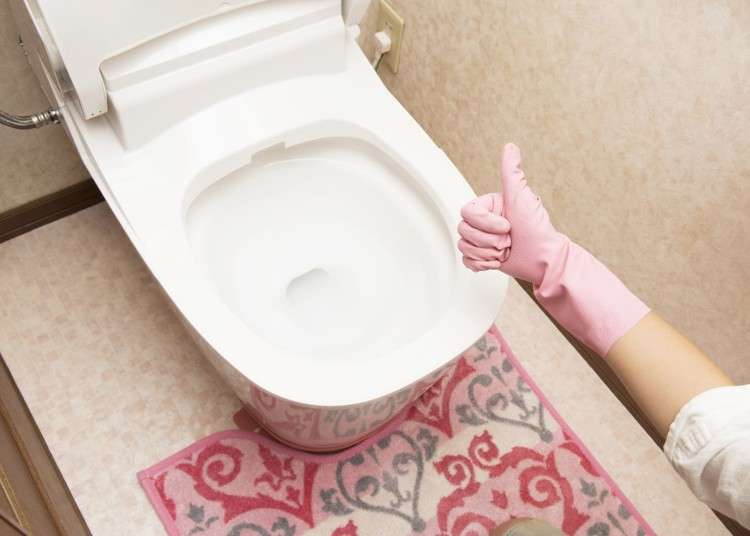
In Japan, you’re likely to encounter toilets and cleaning devices you would have never dreamed of using in your own country. These include familiar Western-style sitting toilets to older Japanese-style squatting toilets, not to mention the high-tech toilets featuring multiple functions that may make you laugh, cry, or sit up in your seat. Let's take a look at the different types of toilets in Japan and some useful toilet etiquette that you should be aware of prior to pushing any buttons.
Finding Restrooms in Japan
While it may be difficult to locate a restroom in rural areas, it’s quite easy to find relatively clean public restrooms in Japan’s metropolitan areas. You can always count on finding toilets inside train stations, though you’ll need to enter through the ticket gate first. Large department stores also tend to have public restrooms available, but you’ll probably need to head up to a floor or two to access them. This can be inconvenient if you really need to go, but you can quickly navigate through the store by following signs hanging from the ceiling or checking the store map near the elevators and stairs. The final place we suggest looking is in public parks of all sizes; even the smaller inter-city parks will often have facilities available.
Almost all public restrooms use the international symbols for gender, so you shouldn’t have a problem figuring out where to go. You can also use a private ‘multipurpose’ restroom; however, much like the seats located next to the door on a Japanese train, these rooms are typically reserved for the elderly, people with disabilities, and families with small children. It’s common courtesy to respect these rules unless no other options are available.
Multipurpose Toilets
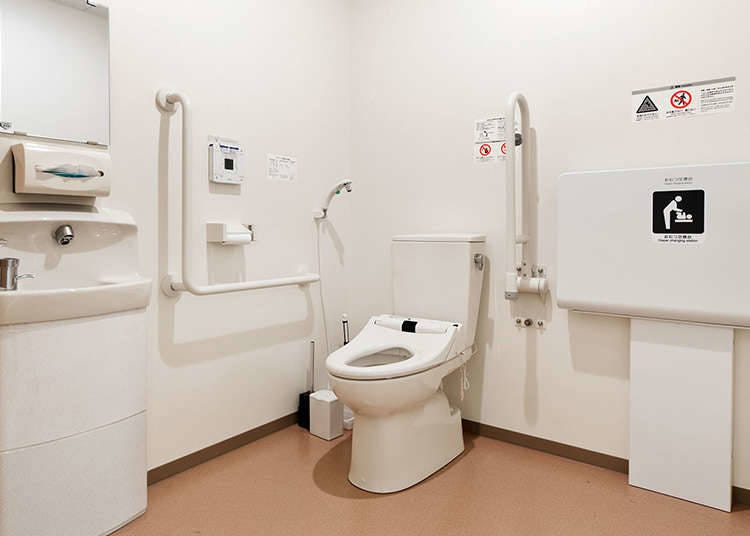
Multipurpose toilets are spacious barrier-free toilets with arm rails and no steps, equipped with wash basins, and are built for people who have difficulties using other toilets. You will often find a full-size bed in the room if you need to rest, as well as an emergency button to call for help (not to be confused with the button that flushes the toilet) and toilet seat boosters that make it easier for toddlers to sit.
Squatting Toilets
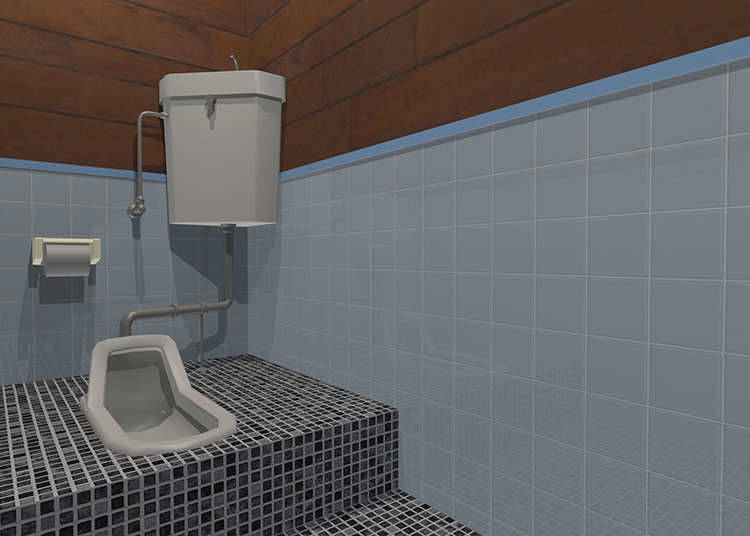
If you happen to use an old, Japanese-style toilet (it looks like a porcelain hole in the ground), you must squat over it to do your business. This type of toilet can still be found throughout Japan and unfortunately, some public parks may offer no alternative. After use, just push the lever or switch to flush, just like on Western-style toilets. To help you overcome any concerns you may have, here are a few tips:
・Practice squatting fully clothed
・Confirm what is available for clean-up
・Make sure your pants or dress doesn’t get in the way or fall in the basin
・Face the pipe coming out of the toilet
・Position yourself as close to the front as possible without being over the hole (this may cause unwanted splashing)
The Washlet
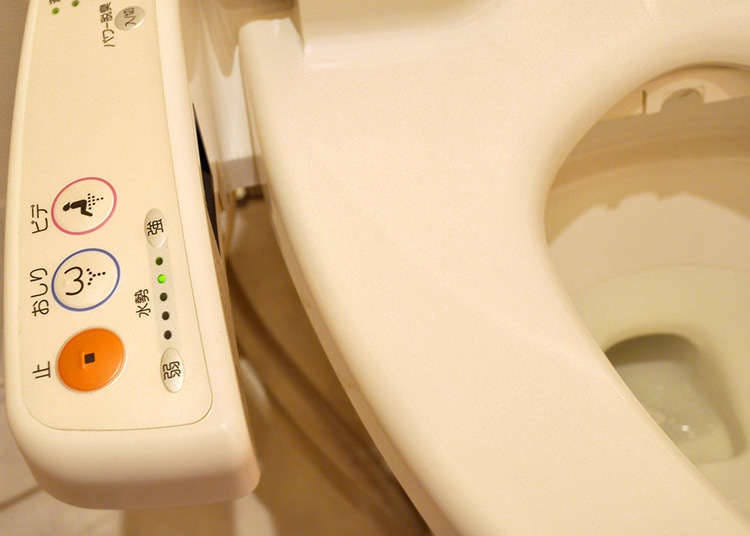
Washlets may be used to clean yourself. Just look for the buttons beside the toilet—one labeled 'bidet' (ビデ) and the other 'oshiri' (おしり), which is the Japanese word for one's bottom. When the button is pressed, water is sprayed with adjustable pressure, which you may want to put on the lowest setting before beginning. Once you feel fully refreshed, push the stop button designated by a black square. Many washlets also feature a blow-drying option for once you're done rinsing.
The Flushing Sound
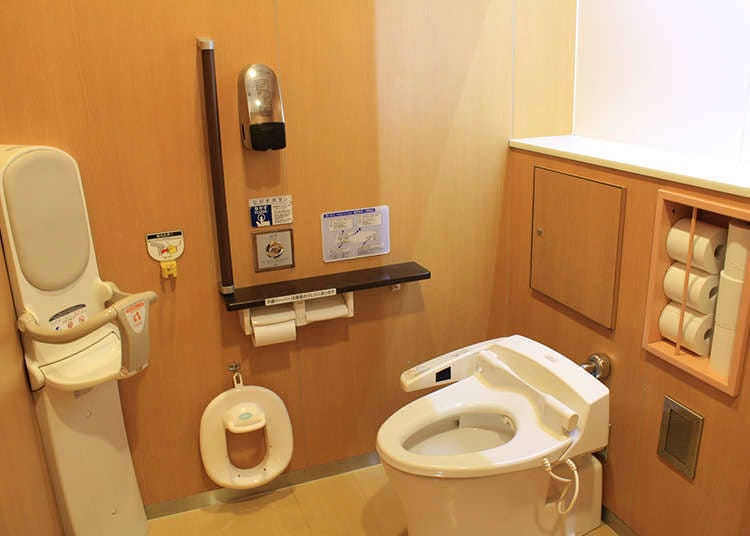
Many toilets feature the option to play a flushing sound from the wall of a stall or a speaker in the washlet. By pressing a button with a musical note on it or waving your hand in front of a sensor, the sound starts to play, drowning out any embarrassing noises you may make while doing your business.
Japanese Toilet Etiquette: Keep Everything Neat and Clean
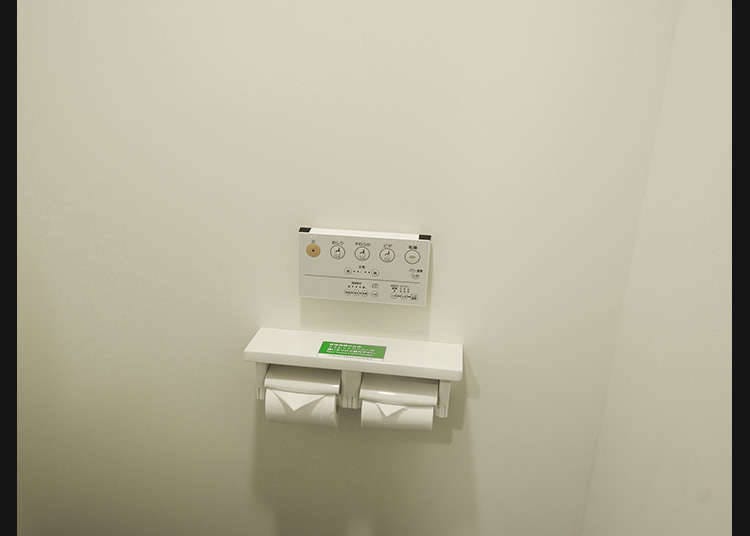
Restrooms are generally very clean in Japan, so do your best to keep it the same way you found it—which in many cases, means spotless. The most important thing is to flush after each use. However, there are tourists who report that they often find it hard to locate a switch for flushing toilets in Japan. This is because there are quite a lot of different flushing methods in Japan. First, try to find a lever or a button next to the toilet. Quite often, toilets will have automatic motion sensors that start flushing once the person stands up.
Disposing of Other Items
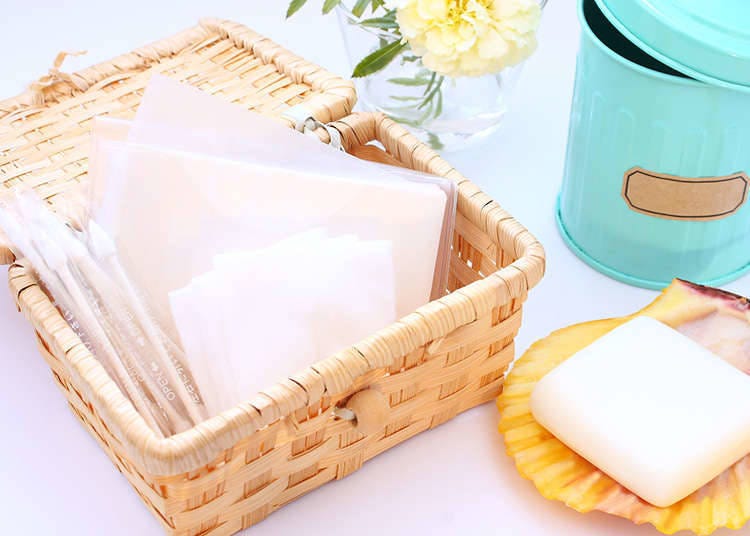
Most public restrooms don’t even have trash cans, but Japanese women's restrooms are equipped with small receptacles inside the individual stalls to take care of sanitary items, or other kinds of trash; please use this bin only for items that shouldn't be flushed in the toilet.
The Baby Changing Table
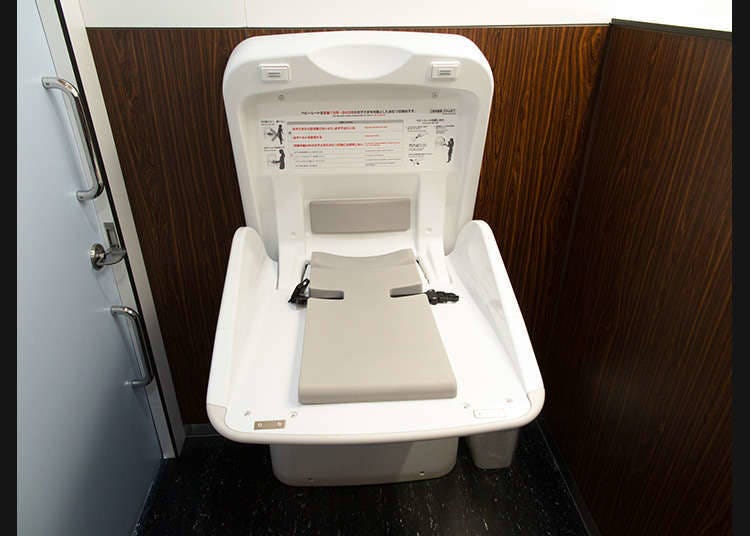
Many places provide baby changing tables inside individual stalls, multipurpose toilets, or in separate rooms outside the toilets. Most of the places provide baby changing tables that are folded up against the wall. Unfold it and extend it out fully before using it.
Toilets in Japan Don’t Need to Be Complicated

Doing your business can be a sensitive if not embarrassing topic for many, and with international travel you may just find yourself needing to ask plenty of questions about it, especially if you don’t speak the language. By remembering the information above you can keep your “business” to yourself and have an uneventful restroom experience during your next trip to Japan.
*Prices and options mentioned are subject to change.
*Unless stated otherwise, all prices include tax.
Popular Tours & Activitiess
Recommended places for you
-

Jukuseiniku-to Namamottsuarera Nikubaru Italian Nikutaria Sannomiya
Izakaya
Kobe, Sannomiya, Kitano
-

Kanzenkoshitsuyakinikutabehodai Gyugyu Paradise Sannomiya
Yakiniku
Kobe, Sannomiya, Kitano
-

Kambei Sannomiyahonten
Yakiniku
Kobe, Sannomiya, Kitano
-
Goods

Yoshida Gennojo-Roho Kyoto Buddhist Altars
Gift Shops
Nijo Castle, Kyoto Imperial Palace
-

ISHIDAYA Hanare
Yakiniku
Kobe, Sannomiya, Kitano
-
Appealing

Rukku and Uohei
Izakaya
Sapporo / Chitose
-
Ad

(Opening in Jan 2026) 'THE SUMO LIVE RESTAURANT HIRAKUZA GINZA TOKYO!' 5 Exciting Ways to Experience the World of Sumo!
-

Jujutsu Kaisen Takes Over JR East With a Wrapped Shinkansen This Winter
by: Guest Contributor
-

New in Ginza! Air BicCamera Ginza Opens with a Faster, More Convenient Shopping Experience
by: Guest Contributor
-

Japan’s Shinkansen Is About to Change Travel in an Unexpected Way
by: Guest Contributor
-
Ad

Discover the "Miraculous Forest" in the Heart of Tokyo: The Institute for Nature Study (9 Minutes from JR Meguro Station)
-

First Japan Cherry Blossom 2026 Forecast Announced! Here's When & Where to See Sakura in Japan
-

A wide variety of Japanese fashion culture and history of Japanese fashion
-

JR Edition: Visit all of Tokyo in one Day with the Tokyo Metropolitan District Pass!
-

The Architecture of Japanese Shrines and Temples
-

Visiting Japan's Miffy Cafe Will Make Your Heart Melt (Photos)
-

Seven Rules You Should Know When You Go to Japan
-

Sightseeing Highlights: Experience the Appeal of Kyoto Geisha Culture
- #best sushi japan
- #what to do in odaiba
- #what to bring to japan
- #new years in tokyo
- #best ramen japan
- #what to buy in ameyoko
- #japanese nail trends
- #things to do japan
- #onsen tattoo friendly tokyo
- #daiso
- #best coffee japan
- #best japanese soft drinks
- #best yakiniku japan
- #japanese fashion culture
- #japanese convenience store snacks












